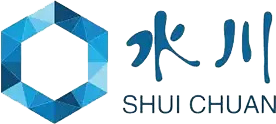The textile industry is undergoing significant transformations as sustainability and environmental concerns gain increasing importance in production practices. Sulphur Black Dye, widely utilized for its deep black color and affordability, plays a pivotal role in dyeing processes across various applications, from apparel to home textiles. According to a recent market analysis by Mordor Intelligence, the global Sulphur Black Dye market was valued at approximately $1 billion in 2022 and is expected to expand at a CAGR of around 4.5% through 2028. As manufacturers and brands strive to meet changing consumer demands for eco-friendly products, the procurement strategies surrounding Sulphur Black Dye are also evolving.
In this dynamic landscape, stakeholders must navigate challenges such as stringent regulations on chemical usage and the rising costs associated with sustainable production methods. The textile industry's increasing focus on adopting sustainable practices is reshaping procurement processes, prompting a shift towards sourcing dyes that minimize environmental impact. A report from Grand View Research highlighted that green initiatives are becoming essential, as 72% of consumers express a preference for brands that demonstrate a commitment to sustainability. Therefore, understanding the current trends and future projections in Sulphur Black Dye procurement will be crucial for companies aiming to maintain competitiveness while adhering to evolving market standards.

Sulphur black dye holds a pivotal role in the textile industry, primarily due to its impressive characteristics and versatility. Renowned for its deep, rich black hue, this dye is favored for its high degree of colorfastness and cost-effectiveness. According to a report by Future Market Insights, the global demand for sulphur dyes is projected to reach around USD 5 billion by 2025, driven largely by the increasing consumption of cotton and other natural fibers in various clothing applications. This increasing demand underscores the essential role sulphur black plays in the dyeing processes of fabrics that require durability and resilience. In the realm of textile applications, sulphur black is widely utilized in dyeing cotton and its blends, ensuring products remain vibrant even after multiple washes. The ISBT (International Society of Book Technologists) highlights that the use of sulphur dyes is intrinsically linked to sustainability efforts in the textile sector. As more brands seek eco-friendly practices, sulphur black dye stands out due to its relatively lower environmental impact when applied in closed-loop water systems, thereby contributing to a greener production process. Additionally, the adaptability of sulphur black dye extends beyond cotton. Reports indicate that it is increasingly being used in technical textiles, including automotive and industrial fabrics, where strength and stability of color are critical. As the textile industry evolves, understanding and leveraging the significance of sulphur black dye not only aligns with sustainable practices but also meets the modern consumer’s expectations for high-quality, durable textiles.

The procurement of sulphur black dye has increasingly become fraught with challenges, particularly in light of recent developments surrounding anti-dumping duties. The Central Board of Indirect Taxes and Customs (CBIC) recently imposed a $389 per metric ton anti-dumping duty on sulphur black imports due to findings related to dumping practices. This move is expected to significantly affect the sourcing strategies of manufacturers relying on this dye, which is widely used in textile applications due to its deep black color and excellent lightfastness properties.
Market data illustrates that sulphur black dye is integral to many sectors, notably textiles, where the demand is projected to grow at a compound annual growth rate (CAGR) of approximately 4.5% over the next five years. However, price volatility exacerbated by duties makes effective procurement increasingly difficult. Companies must navigate not only the elevated costs but also the complexities of compliance and supply chain reliability in a market where many consumers are pushing for sustainable and ethically sourced products.
In addition to regulatory hurdles, industry players are also contending with fluctuating raw material costs and geopolitical tensions that affect supplier relationships, particularly with nations like China, from which India sources a significant portion of its sulphur black dye. As these challenges stack up, businesses throughout the supply chain must become more agile and informed, seeking innovative solutions and alternative suppliers to mitigate risks associated with procurement.

The textile and fashion industry is experiencing a significant shift towards sustainable practices, particularly in the sourcing of dyes such as sulfur black. With the growing awareness of environmental issues, brands are increasingly focusing on innovative solutions that not only reduce water consumption but also enhance the sustainability of their products. Recent advancements reveal a promising trajectory where companies are harnessing technology and creativity to promote eco-conscious practices in dyeing processes.
Innovations in dyeing technology are pivotal in this transition. For instance, some brands have developed dyeing processes that eliminate the need for harmful chemicals traditionally used in black denim production. By adopting new methodologies, these companies have reported substantial reductions in water usage, aligning with industry efforts to mitigate pollution associated with textile dyeing. According to industry reports, the denim sector alone is projected to reduce its water footprint by approximately 20% over the next five years through such innovations.
Additionally, the emergence of biotechnological solutions presents a compelling avenue for sustainable sourcing of dyes. Researchers are exploring the use of bacteria for dye degradation and wastewater treatment, which could revolutionize the way the fashion industry manages its environmental impact. The application of these microbial processes not only addresses pollution but also opens up new avenues for the development of biodegradable dyes that are less harmful to ecosystems.
As brands strive to meet consumer demand for sustainable products, the integration of advanced dye technologies and responsible sourcing practices is set to reshape the landscape of sulfur black dye procurement. This evolution reflects a broader commitment within the industry to prioritize environmentally friendly methods, ensuring a more sustainable future for fashion and textiles.

In the rapidly evolving landscape of sulphur black dye procurement, suppliers must adapt to changing market dynamics to maintain a competitive edge. According to recent insights from the Global Specialty Chemicals Market report, the demand for sulphur black dye is projected to grow at a CAGR of 4.2% over the next five years. This growth is primarily driven by increased usage in textiles, especially in the apparel sector, where deep, rich colors are a constant trend.
To successfully navigate this market, suppliers should prioritize the adoption of sustainable practices. The EcoTextile report highlights that 60% of consumers prefer products that are sustainably sourced. By investing in environmentally friendly production methods, suppliers can attract a more conscious customer base while aligning with regulatory standards that are tightening globally. This not only solidifies supplier reputation but also opens doors to collaborations with brands that prioritize sustainability.
Moreover, building strong relationships with dye manufacturers is crucial. According to the International Dye Research Association, 75% of successful procurement strategies rely on consistent communication and trust between suppliers and manufacturers. By establishing transparency in operations and maintaining stock levels, suppliers can better cater to the fluctuating demands of the market.
Finally, leveraging technology is indispensable in today’s procurement strategies. A recent survey from the Chemical Industry Association found that 82% of suppliers who adopted data analytics tools experienced improved inventory management and forecasting accuracy. Hence, integrating advanced technology can significantly enhance operational efficiency, enabling suppliers to respond swiftly to market changes while maximizing their profitability.
In recent years, the procurement strategies for Sulphur Black dye have witnessed significant transformations, influenced by both technological advancements and emerging market trends. As sustainability becomes a top priority in the textile industry, suppliers and manufacturers are increasingly adopting innovative procurement strategies that not only address cost efficiency but also focus on environmental impact. This shift presents an opportunity for businesses to reevaluate their sourcing methods and implement practices that align with eco-friendly initiatives.
One notable innovation in Sulphur Black dye procurement is the integration of digital platforms for better supplier and inventory management. These platforms enable companies to track their supply chain in real-time, ensuring transparency and reducing waste. By leveraging data analytics, businesses can forecast demand more accurately, leading to optimized production schedules and reduced overstocking. As manufacturers adopt these digital tools, they are finding ways to streamline their processes, ultimately enhancing their competitive edge in the marketplace.
Furthermore, the collaboration between dye manufacturers and textile producers is becoming increasingly crucial. By establishing closer partnerships, both parties can share insights and invest in research that drives the development of more sustainable dye formulations. Innovations in bio-based Sulphur Black dyes are gaining traction, offering an environmentally friendly alternative without compromising on quality or performance. This collaborative approach not only fosters innovation but also ensures that procurement strategies are forward-thinking and aligned with evolving consumer preferences.
